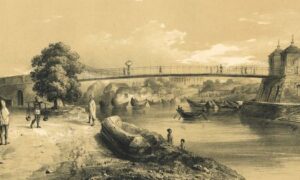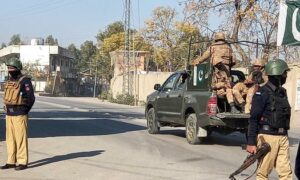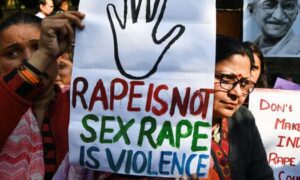Medical professional Sandeep Kumar spends a quarter of his waking hours sitting in his car. Kumar lives in Bengaluru’s HSR Layout and works in two hospitals in two different parts of the city.
Travel to both of them involves passing through the infamous Silk Board Junction. The gateway to two of the city’s biggest information technology clusters, the junction is noted for gridlocked traffic that can leave commuters stuck for hours.
Kumar said it takes him at least two hours to get to each of the hospitals, one 10 km away and the other 15 km away from home. As a result of his, he spends at least four hours on the road each day. On some days, he spends as much as four hours one way.
“It’s absolutely horrible,” he said.
Darshan B, who works at an information technology firm in HSR Layout, also said he spends close to two hours trying to get to work. “Ideally, if there’s no traffic at all, it should take me only 30 minutes,” he said. “But I spend nearly four hours every day on my bike.”
Alankrita Srivastava, a resident of HSR Layout, used to commute to the International Tech Park in Whitefield on her two-wheeler – but health concerns made her switch to the bus. “If I have to sit on my bike waiting in traffic, I knew I was going to mess up my spine,” she explained.
But travelling by bus meant more time on the road. Sometimes, Srivastava just logs in from the bus and starts working.
Most professionals in Bengaluru who have to commute to an office face similar challenges. The city has a reputation for having some of the worst traffic in the country – in 2024, one index ranked it as the city with the third-worst traffic in the world. The problem has a steep cost: according to a 2023 study, the city loses Rs 20,000 crore each year as a result of hours that residents lose in traffic snarls.
Experts note that the problem has its roots in a combination of factors, including the lack of long-term planning as it has experienced a boom in construction over the past few decades. The authorities can only tackle the traffic if they consider sweeping measures such as disincentivising the use of private vehicles and more emphatically promoting public transport, they say.
“Future [construction] projects should be cleared after traffic assessment and undertaking that they provide adequate parking,” said Srinivas Alavilli, from the research organisation WRI India. “Same as is done for sewage, water supply or electricity lines. All these need to be in place before giving permission to high-rise buildings with high density.”
This report is part of our Urban Immobility series. Read the rest of the series here.
Historical reasons
Bengaluru began as “a collection of villages situated atop a hill”, such as Haraluru and Kadubeesanahalli, Alavilli said. Even today, these settlements cannot accommodate major roads.
“Bengaluru will complete 500 years next decade, so it is a very old city,” Alavilli said. “Therefore, there are a lot of areas with narrow lanes, making it difficult for buses to navigate, other than the main carriageways.”
In earlier decades, even as Bengaluru expanded, it did not experience severe traffic congestion because the growth primarily occurred in the form of planned townships, experts said.
“In the city of Bengaluru, development has usually happened in a quasi-private and quasi-public way,” said Bharath M Palavelli, a researcher who works in the field of public policy. In the 1940s and 1950s, when public sector companies such as Hindustan Aeronautics Limited and HMT were set up, “they all built their own colonies – the employees had their own housing and transport”, he said.
In the 1990s, the city’s landscape began to change dramatically as its information technology sector began to flourish. The IT companies, following the western model, did not have integrated housing. A rash of unplanned projects sprung up to cater to the new demand.
With civic bodies lacking the teeth to regulate these projects, the result was a mismatch between the carrying capacities of roads and the building stock being created, Palavalli explained.
Experts noted that in many countries, such as the United States, before work on a project begins, a developer has to ensure that the civic authorities conduct a traffic impact assessment.
Bengaluru lacks such a process. “When a new IT park comes up, suddenly you see the whole road network and traffic go haywire,” said Ashish Verma, a professor at the Indian Institute of Science. “It’s because you don’t do that impact assessment, which is mandatory in other countries.”
Rise in private vehicles
Another aspect of unplanned development in Bengaluru is that the city expanded without its public transport system being strengthened simultaneously. As a result, the ownership of private vehicles rose rapidly.
“The number of personal vehicles has reached 1.2 crore, which means that there are more vehicles than adults in this city,” Alavilli said. (It is estimated that there are 62.5 lakh adults in Bengaluru.)
This number continues to increase but infrastructure simply cannot keep up, he said. “With the pace at which people and their vehicles are growing in the city, no road network is going to be sufficient,” Alavilli said. “It is a capacity problem – you can’t fit 100 cars on a road that can fit only 20 cars.”
In other cities, Alavilli observed, public transport has played a crucial role in limiting traffic levels. “In global cities and even in the global South, cities prioritise public transport because mass public transport carries a lot more people than individual vehicles,” he said.
The problem in Bengaluru is exacerbated by the fact that many major government infrastructure projects are geared towards private vehicles.
Palavalli gave the example of the Electronic City flyover, one of the city’s most congested stretches of road. “Nowhere in any country has anybody built a 10-km stretch of a flyover which has only one entry and one exit. It only served the purposes of those working in Electronic City,” Palavalli said. “That’s why I feel that planning in the city is often short-sighted, because the planning is happening for a far smaller set of people. It’s not happening for the city at large.”
Apart from misguided priorities, the city also suffers because the civic authorities are not sufficiently far-sighted, experts said.
“A master plan should anticipate and guide a city’s growth,” said Vijay Gopal Kovvali, from the Centre for Infrastructure, Sustainable Transportation and Urban Planning at the Indian Institute of Science. “Master plans that support good land-use and transport integration ensures the city does not develop haphazardly, ensuring both smoother and safer travel across the city.”
Kovvali noted that there were some examples of areas that had seen better planning. “Areas like Jayanagar are better planned because they have grid-like layout with shorter blocks making walking easier,” he said. “In contrast, areas like Sarjapura see more vehicle use because they lack a well-connected transport network and clear planning for how land should be used.”
In most parts of Bengaluru, the authorities resort to ineffective short-term solutions to manage traffic problems.
For instance, the traffic police try strategies such as blocking u-turns, turning roads into one-ways and extending the waiting time at signals from three to five minutes.
Kovvali pointed out that they usually make these decisions on their own because they are not given adequate technical support to analyse problems. “Often, these decisions make the traffic worse because it forces vehicles to take a longer route or cause unnecessary delays that eventually causes traffic jams,” he said.
Need for public transport push
Experts said the only long-term change that could ease Bengaluru traffic is if more residents shift to public transport. The metro system could play a key role in this regard, Kovvali noted, because many potential users currently used private vehicles.
“Some people who can afford a metro can often also afford private transport,” he said. But because the network was currently limited “instead of waiting 10-15 minutes for the train, they would rather spend a bit more money and use private transport”, he added.
Alavilli said that this could change as the metro system expands. “In the next five years, the metro and suburban network will be over 250 km, right now it is just 70 km,” he said. “And Bengaluru’s experience with the metro is that many commuters will switch from personal vehicles if the metro is accessible.”
In fact, Srivastava and Dharshan are both eagerly waiting for the metro near HSR Layout. “They’ve been constructing it for a while now,” Srivastava said. “I’m really hoping that it will be completed soon. That is the only way that travel will stop being such a pain.”
Some road users, including bus conductors and drivers of the Bengaluru Metropolitan Transport Corporation, contend that more support for the bus system would benefit the city. “It’s annoying to see just one person sitting in a car occupying so much space on the road, when they can easily occupy a seat on the bus and free up the road,” said one bus driver, who asked to remain anonymous. “If only more people chose public transport, all our lives would improve.”
One bus conductor suggested that information technology companies could be more flexible with their timings. “Only during those peak hours, the buses are a bit crowded,” she said. “If they changed their times to a little later or were flexible, then we would have no problem at all. In most buses, seats are empty as soon as we cross that peak time.”
Alavilli asserted that commuters would only shift to buses if travel time on them was shorter than for private vehicles – this could be ensured by marking out dedicated bus lanes on roads.
“It’s not fair that 70 people in a bus are stuck in the same traffic as individuals in personal vehicles,” he said. “That’s not a good use of the roads. So we need to create dedicated bus lanes and bus priority lanes wherever there are more than three lanes.”
He added, “Instead of questioning whether there is space for a bus lane, we should start questioning where the space is for a car. Then we can find sensible, sustainable solutions for congestion.”
Palavalli noted that bus fares in the city, which range from Rs 5 to Rs 40, also discouraged some users. This became apparent when ridership jumped 25% after the Karnataka government offered free bus travel to women in the state.
“That shows that public transport in Bengaluru is unaffordable,” said Palavalli. “BMTC is one of the most expensive bus services in India.”
Palavalli said that the government should even consider making bus travel free for all commuters. “Even if buses are crowded, it is far simpler and more cost effective to add more buses on the road than to widen roads, add new metro lines and increase private vehicles on the roads,” he said.
He added, “If the BMTC buses were free for everyone it would have a direct impact on people’s health and reduce expenditure on fuel and other private vehicle expenditures.”
This article first appeared on Scroll.in
📰 Crime Today News is proudly sponsored by DRYFRUIT & CO – A Brand by eFabby Global LLC
Design & Developed by Yes Mom Hosting






